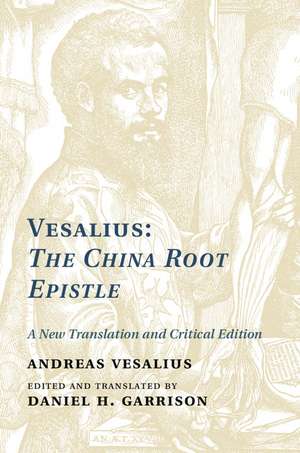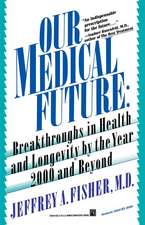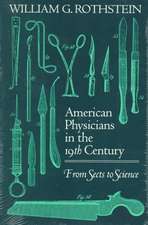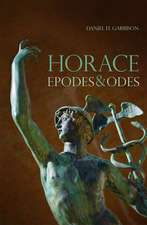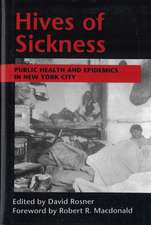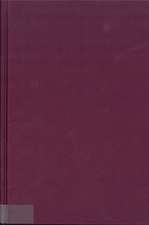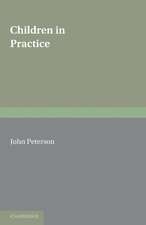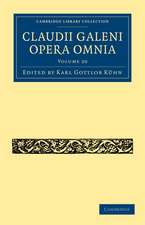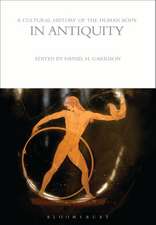Vesalius: The China Root Epistle: A New Translation and Critical Edition
Autor Andreas Vesalius Daniel H. Garrisonen Limba Engleză Hardback – 11 ian 2015
Preț: 416.00 lei
Preț vechi: 437.89 lei
-5% Nou
Puncte Express: 624
Preț estimativ în valută:
79.63€ • 86.52$ • 66.93£
79.63€ • 86.52$ • 66.93£
Carte tipărită la comandă
Livrare economică 22 aprilie-06 mai
Preluare comenzi: 021 569.72.76
Specificații
ISBN-13: 9781107026353
ISBN-10: 1107026350
Pagini: 290
Ilustrații: 37 b/w illus.
Dimensiuni: 158 x 235 x 21 mm
Greutate: 0.59 kg
Ediția:New.
Editura: Cambridge University Press
Colecția Cambridge University Press
Locul publicării:New York, United States
ISBN-10: 1107026350
Pagini: 290
Ilustrații: 37 b/w illus.
Dimensiuni: 158 x 235 x 21 mm
Greutate: 0.59 kg
Ediția:New.
Editura: Cambridge University Press
Colecția Cambridge University Press
Locul publicării:New York, United States
Cuprins
1. Dedicatory preface Franciscus Vesalius; 2. Author's greeting to Joachim Roelants; 3. Occasion for writing about the China root; 4. With what success many have used the China; 5. Description of the China root; 6. Method of preparing the China decoction; 7. Quantity of the first China decoction to be delivered, and the time to give it; 8. How a sweat should be induced; 9. What drink is useful; 10. Sleep and wakefulness; 11. Movement and rest; 12. Concern about bodily wastes; 13. What affects of the mind are applicable; 14. Sexual activity; 15. How long the first decoction should be used; 16. A method of taking and preparing a second decoction; 17. A way of administering sparta parilla; 18. Native and familiar drugs should be put to use rather than exotics; 19. Decoction of chamaedrys; 20. No small results can by expected from genuine rhapontic; 21. Hapless people who gratify themselves by publishing something; 22. Occasion for the letter of Sylvius in which it was declared that nothing written by Galen is completely in error; 23. Occasion for the opinion, here to be recorded, of the letter in which Vesalius replied to Sylvius; 24. Galen did not dissect humans, but teaches the study of animals instead of man; 25. A number of conjectures from the bones; 26. Conclusions drawn about the fat, muscles, and ligaments, whereby it is concluded that Galen did not describe the human fabric; 27. Several places taken from the series of veins and arteries in which it is inferred that Galen did not dissect humans; 28. Reasons taken from the nerves by which it is known that humans were not dissected by Galen; 29. Reasons selected from the contents of the peritoneum; 30. Some conjectures based upon the parts that are contained in the thorax; 31. Reasons taken from those contained in the skull; 32. Some places where Galen openly criticized the Ancients because they had dissected humans and not apes, as he did; 33. Not everything in his description of the parts was correctly reported and described by Galen; 34. A number of untrue descriptions in the bones; 35. Several inaccurate descriptions taken from the account of muscles and ligaments; 36. Some false descriptions gathered from the account of veins and arteries; 37. Accepted descriptions in the account of nerves which are not quite true; 38. Descriptions of the parts that are contained in the peritoneum, which are not entirely true; 39. Several untrue descriptions gathered from the parts contained in the thorax; 40. False descriptions among the parts that are surrounded by the skull; 41. Some places where it is known that Galen was not altogether sound in assigning the functions and uses of the parts; 42. In his account of the bones; 43. Several uses and functions not well assigned in Galen's account of the muscles and ligaments; 44. Places collected from the description of veins, arteries, and nerves where it is known that Galen consistently assigned incorrect uses and actions; 45. A description of some things that are contained in the peritoneum; 46. From the description of parts located in the thorax and skull; 47. Some invalid anatomical proofs of Galen are mentioned; 48. How useful the annotations of Vesalius have been in Galenic anatomy, and how little they are to be needed hereafter; 49. Method of administering the water of the China root.
Recenzii
'Non-Latin readers can now compare its contentwith the annotations in Vesalius's own hand to the revised Fabrica of 1555, viewed as a major contribution to anatomical understanding in its own right rather than a mere update of 1543.' Gül Russell, Renaissance Quarterly
Descriere
This book provides the first annotated English translation from the original Latin of Andreas Vesalius' China Root Epistle.
